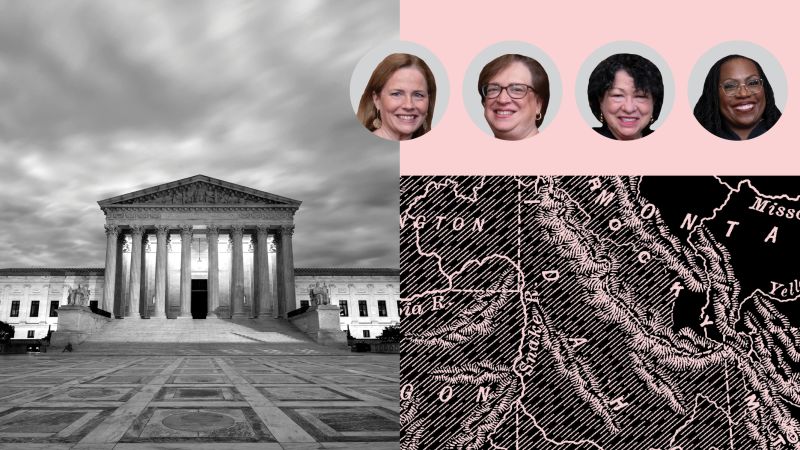The Supreme Court initially appeared to be building on its 2022 decision overturning Roe v. Wade by letting Idaho enforce its ban on abortion with limited exceptions, despite challenges from the Biden administration. The split decision of 6-3, with Republican-nominated conservatives supporting Idaho and Democratic-appointed liberals objecting, set the stage for further restrictions on abortion access.
However, over the course of six months, a combination of misgivings among key conservatives and leverage from liberal justices led to a shift in the case. Following oral arguments, Chief Justice John Roberts did not assign the court’s opinion to anyone, indicating a lack of clear majority support for Idaho. Negotiations ultimately led to a compromise decision limiting the Idaho law and temporarily halting further restrictions on abortion access, marking a departure from the court’s conservative dominance.
After the Supreme Court overturned Roe v. Wade in June 2022, several states, including Idaho, implemented outright bans on abortion with limited exemptions. The Biden administration sought to counteract the effects of the decision by issuing guidance stating that the Emergency Medical Treatment and Labor Act would preempt any state abortion ban in emergency termination situations. When Idaho was sued by the Justice Department in August 2022, seeking to block the enforcement of its ban in emergency rooms, a temporary injunction was issued against the abortion ban.
The initial support for Idaho’s ban on abortion with limited exceptions faced challenges as key conservatives had misgivings and liberal justices exerted leverage on the case. Following a lack of clear majority support for any resolution, negotiations led to a compromise decision limiting the Idaho law and delaying further restrictions on abortion access. This unexpected turn of events highlighted the shifting dynamics within the Supreme Court and its impact on key issues such as reproductive rights.
The ongoing legal battle between the Biden administration and Idaho over the enforcement of the state’s abortion ban in emergency situations underscored the complex interplay between federal protections and state laws. Despite initial setbacks for Idaho in the lower courts, the state sought intervention from the Supreme Court, leading to a temporary injunction against the abortion ban while the appeal was pending. The legal proceedings highlighted the ongoing tension between state sovereignty and federal obligations in matters of reproductive rights.
Overall, the Supreme Court’s handling of the Idaho abortion ban case showcased the intricate balance of power and dynamics within the court, with unexpected shifts in support and negotiations ultimately leading to a compromise decision. The case also underscored the ongoing legal battles surrounding reproductive rights and the complex interplay between federal protections and state laws in the context of abortion access.


